Can You Burn Coal in a Wood Stove?
- October 4, 2023
- 13 comment
Homeowners seeking efficient home heating solutions often ask, ‘Is it safe to burn coal in a wood stove?’ The answer isn’t straightforward. Key factors such as the stove’s design, the type of coal used, and local regulations significantly influence this decision. Join us as we delve into the complexities of using coal in wood stoves, exploring everything from stove compatibility to environmental considerations. Discover essential tips and insights to navigate this heating conundrum safely and effectively.
A Personal Note: The Day I Tried Coal in My Wood Stove
To lend a touch of personal experience to this topic, I once tried burning coal in my wood stove, driven by curiosity and the hope for lasting warmth. My grandfather had always raved about the enduring heat coal provided during his days, and I thought, “Why not give it a shot?”

I placed a few chunks of bituminous coal in, expecting a brilliant, long-lasting fire. Initially, everything seemed fine—the flames danced a bit differently, and the heat was notably intense. However, as hours passed, I noticed the stove becoming excessively hot. Concerned, I minimized the air vents to reduce the heat, but the coal continued to radiate an intense warmth.
The following day, I was met with an unexpected sight: clinkers. These hard, stone-like residues were a stark contrast to the fine ash I was accustomed to when burning wood. The air in my home also felt different—less fresh, and a bit stifling.
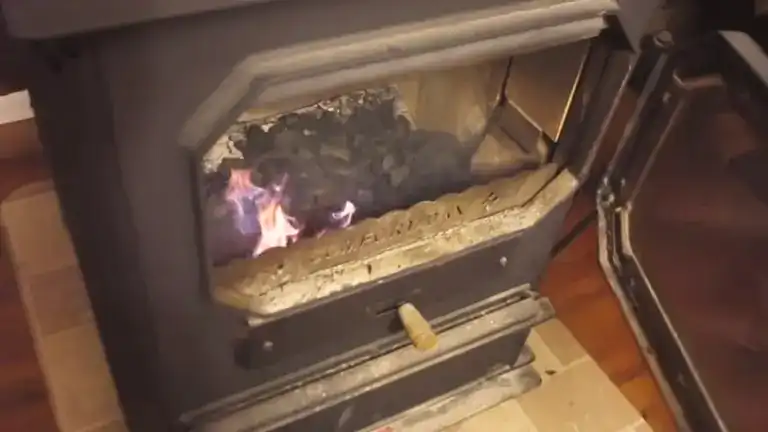
It was a lesson learned. Just because something can be done doesn’t mean it should be. While coal did provide warmth, the aftermath wasn’t worth the experiment, especially without a stove designed for coal. Since then, I’ve stuck to burning seasoned wood and ensuring that my choices are both safe for my home and kind to the environment.
Whether you’re exploring different heating options or just looking to try something new, remember to prioritize safety and sustainability. Sometimes, lessons come from personal experiences, and other times, from the shared wisdom of others. Stay warm, but most importantly, stay informed.
The Fundamental Differences Between Coal and Wood
Before delving into the question, it’s vital to understand the primary differences between coal and wood.
- Burn Temperature – Anthracite coal doesn’t mess around. Lighting it up can lead to temperatures as high as 2,600°F (1,427°C). Its sibling, bituminous coal, though softer, still packs a punch, burning between 2,000°F and 2,240°F (1,093°C to 1,227°C). Wood? It’s got range. Depending on its type, it can gently warm up to a fiery 2,600°F (1,427°C). Especially the likes of oak and hickory, which comfortably heat up spaces at 1,700°F to 2,500°F (927°C to 1,371°C).
- Burn Time – Anthracite coal is the endurance athlete of fuels. Once ignited, it can keep the cold at bay for an impressive 12 to 24 hours. Wood, on the other hand, is like a sprinter. Quick, intense, and lasting anywhere from 2 to 5 hours, depending on its size and quality.
- Emissions – Here’s where things get a tad tricky. Bituminous coal, when burned, can release some unwelcome guests like sulfur dioxide, known for causing acid rain. And that’s not all; it can also emit other pollutants. Wood, if properly dried and seasoned, is a bit gentler on the environment. But if it’s damp, watch out for creosote, a sticky troublemaker that loves to cling to chimneys.
- Ash Production – Every good night has a morning after. With coal, especially Anthracite, you’ll find a heap of ash, sometimes up to 15% of its original size. Occasionally, you might spot clinkers—tough lumps that can block air in stoves. Wood, being the lighter guest, leaves behind a small reminder, usually just 0.5% to 2% ash.
Please note that these numbers can vary based on the specific type and quality of coal and wood, stove design, and combustion efficiency. Always refer to manufacturer guidelines and local regulations when burning any fuel.
Stove Design Considerations
Stove shopping can be likened to picking the right instrument for a maestro—each has its tone, rhythm, and character. Especially when you’re torn between burning wood and coal, the design nuances become crucial. Let’s demystify these stove designs:
1. Grate Design
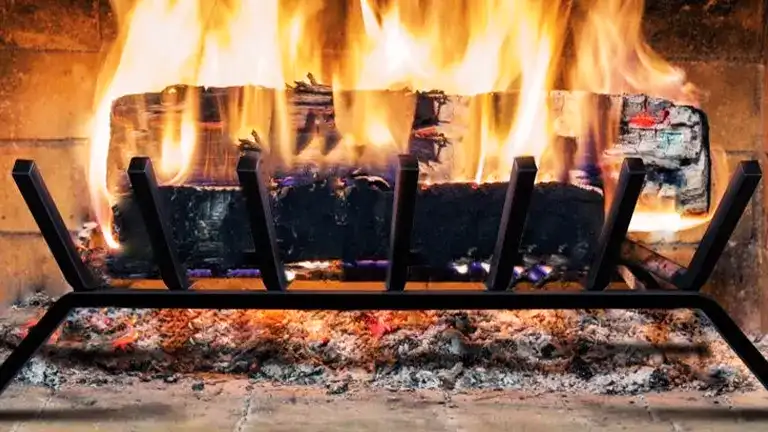
Ever noticed the base of wood stoves? They often showcase a flat or gently sloping stage where wood performs its fiery ballet, turning to glowing embers. It’s a setup tailored for wood, providing just the right platform for a stellar burn. Enter coal, a performer of a different kind, craving more from its stage. It thrives on a gust of air from beneath. As a result, stoves welcoming coal feature grates dotted with gaps, not for aesthetics, but to let the air stream in, enabling coal to shine in its full, luminous glory.
2. Material Choices

A stove’s exterior is its shield against the onslaught of fervid flames within. Coal, being the intense performer it is, radiates a fierce heat that many woods would shy away from. Such robust heat necessitates an equally robust shield. Enter multi-fuel stoves. These marvels crafted keeping coal’s passion in mind, don robust materials. Their resilience isn’t just about enduring but excelling, ensuring they stand tall, undeterred by the scorching temperatures
3. Airflow Control

Fuel and airflow together create a symphony. Just as a musician needs the right tempo, coal demands an exact air-to-fuel harmony. It’s picky and precise. Wood, being a more laid-back artist, can adapt to varying tempos. However, not all wood stoves come equipped to cater to coal’s precise needs. To strike the perfect chord with coal, a stove must offer nuanced airflow controls, allowing for meticulous fine-tuning.
Legal and Environmental Considerations
Using coal in wood stoves? Before you toss that black chunk into the flames, consider the ripple effect, not just in your home but beyond its walls. Our choices, especially when it comes to heating, echo in legal corridors and in nature’s delicate balance. Let’s navigate through these considerations:
1. Air Quality Standards
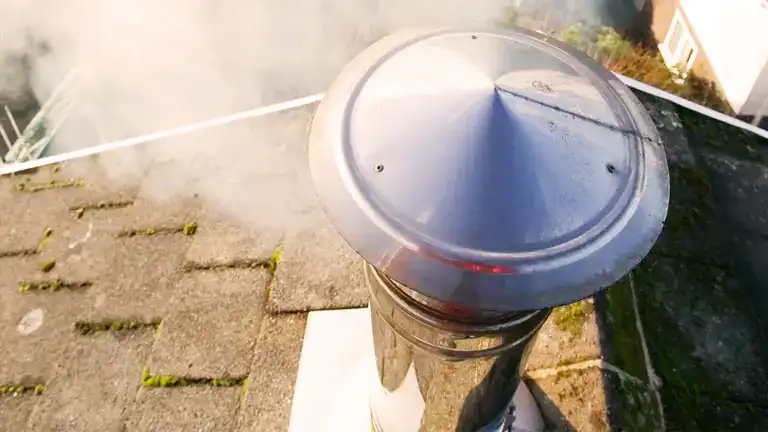
Imagine the first deep breath after a rainfall—clean, crisp, refreshing. That’s what clean air feels like, and it’s a right we all deserve. However, burning coal can cast a shadow over this experience. Coal carries with it an entourage of pollutants that can taint the air we breathe, affecting our health and the environment. Many regions, recognizing the weight of this issue, have set up rigorous air quality standards. Some have gone to the extent of banning coal burning outright. This isn’t about bureaucracy; it’s about safeguarding public health. So, before you kindle that coal fire, ensure you’re in harmony with your local laws. It’s about keeping the air clean for all.
2. Availability
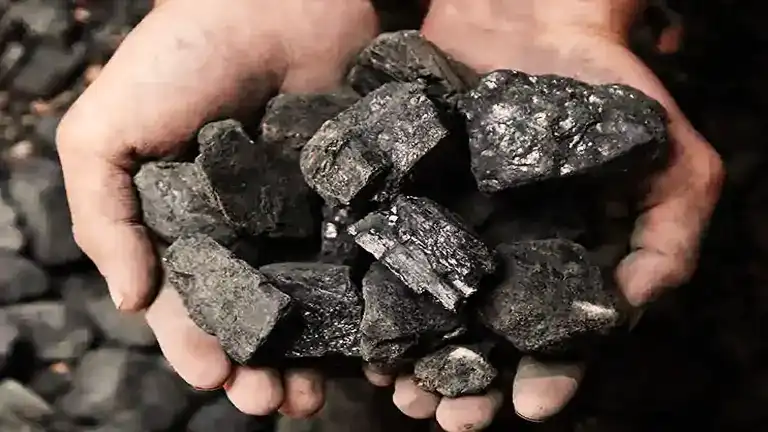
Flashback to a time when coal was the poster child for heating. Its black, gleaming pieces were a mainstay in homes. But times have evolved. With rising environmental consciousness and the birth of greener heating alternatives, coal’s star has dimmed. This transition means that in many places, getting quality coal has become akin to a treasure hunt. The once-familiar coal vendors are now a rarer sight. It’s a signpost of our shifting values, tilting towards a sustainable future.
3. Carbon Footprint

Think of burning wood as a closed circle: trees absorb carbon dioxide, grow, and when burned, release that very carbon dioxide back. It’s a dance of balance, making wood a ‘carbon-neutral’ player. Coal, however, plays a different tune. Buried eons ago, it’s a time capsule of ancient carbon. When we burn coal, we release this ancient carbon—a massive addition to today’s atmosphere, escalating greenhouse gas levels. It’s a heavy footprint, one that could impact climate patterns for generations to come.
So, as you stand with coal in hand, poised to feed your stove, remember the echoes of your choice. It’s about more than just warmth; it’s about the air we breathe, the resources we access, and the planet we cherish.
The Bottom Line
While technically, you might be able to burn coal in a wood stove, it’s generally not advisable unless the stove is specifically designed as a multi-fuel appliance. There are significant risks involved, from damaging the stove to releasing harmful emissions. If you are keen on burning coal, consider investing in a stove designed for that purpose, and always ensure that it’s environmentally and legally compliant in your region.
In the quest for efficient heating, always prioritize safety and environmental responsibility.
“Burning coal in a wood stove is akin to using a race car for daily commutes; it might work, but it’s not quite right.” – David Murray
FAQs
- Can I mix coal and wood in my stove for a hybrid fire?
While it might sound like a heat powerhouse, mixing coal and wood can lead to problems. Wood can produce tarry substances which, when combined with the high heat of coal, could increase the risk of chimney fires. - I’ve heard coal burns blue and wood burns yellow. Is that true?
Yes, it’s a mesmerizing dance of colors! Coal, especially anthracite, often produces a shorter, bluish flame, while wood flames tend to be taller, lively, and yellow or orange. - Does coal leave a different aroma compared to wood?
Absolutely. While wood often leaves a comforting, campfire-like aroma, coal has a more distinct, slightly acrid scent. Some people find it nostalgic, especially if they grew up around coal stoves, while others might find it less pleasant. - Are there coal variants that produce less ash?
Yes. Anthracite, a hard coal, generally produces less ash than its softer counterpart, bituminous coal. However, remember that even the ‘cleaner’ coals can produce clinkers that can clog a wood stove not designed for coal. - If wood is carbon-neutral, does that make coal carbon-negative?
Interesting thought, but no. Wood is considered carbon-neutral because the CO2 it emits when burned is roughly equal to what the tree absorbs during its lifetime. Coal, however, releases carbon stored millions of years ago, adding to the current CO2 levels, and making it a significant contributor to greenhouse gases. - Can I convert my wood stove into a coal stove?
While some modifications might allow this, it’s generally not recommended. The heat intensity, airflow requirements, and ash production differ between the two fuels. It’s best to invest in a multi-fuel stove if you wish to burn both. - Why does coal often burn longer than wood?
Coal’s compact nature and different carbon structure allow it to have a more extended combustion period. While a wood log might be consumed in flames and turn to ash, coal chunks maintain their form longer, releasing heat over an extended period. - If I burn coal once in my wood stove, is it permanently affected?
Not necessarily, but it’s not advisable. Burning coal in a wood-only stove can lead to increased wear and tear, possible warping from higher temperatures, and a buildup of clinkers. While one-time use might not cause lasting damage, it’s best not to make it a habit. - Can I use coal ash in my garden, like I do with wood ash?
While wood ash can be a good soil additive due to its liming effect, coal ash isn’t recommended for gardens. It can contain heavy metals and other contaminants that might be harmful to plants and the soil. - Why is coal sometimes called ‘black gold’?
The moniker ‘black gold’ stems from coal’s historical significance. It powered the Industrial Revolution, heated homes, and was a driving force behind many economies, making it as valuable as ‘gold’ in its importance.
Hey there, wonderful readers! We’ve journeyed through the ins and outs of burning coal in wood stoves, and now we’d love to hear from you. Ever tried something similar? Or perhaps you’ve got some handy tips or intriguing tales from your own heating adventures? Pop them down in the comments below! Your experiences and insights light up this community. And if you found this piece insightful, why not share it with friends and family? Let’s keep the warmth and conversations flowing. Cheers to cozy, informed choices!
We hope this guide has shed light on the dos and don’ts of using coal in a wood stove. Do you have experiences or tips to share about burning coal or wood in stoves? Or maybe you have a question we didn’t cover? Drop us a comment below—we’d love to hear your thoughts and learn from your experiences! Don’t forget to share this article with friends who might find it helpful.

David Murray
Forestry AuthorI'm David Murry, a forestry equipment specialist with a focus on chainsaw operation. With over 13 years of experience, I've honed my skills in operating and maintaining a wide range of machinery, from chainsaws to log splitters. My passion for the outdoors and commitment to sustainable forestry drive my work, which emphasizes safety, efficiency, and staying updated with industry advancements. Additionally, I'm dedicated to sharing my expertise and promoting environmental awareness within the forestry community.
13 comments
Your better off buying a anthracite coal stove and burning firewood in it I burn two cords of wood in mine every year when low heat is needed. when the temperature are in the 30s I don't start burning coal till its 20 degrees outside
bryan winn
October 21, 2023 11:32 amVery important!!!!! You should mention that the wood you burned, would otherwise rot in the woods, over 95 percent of the carbon would react with oxygen, n decay back into the air, releasing the same energy back into the air. If you ever see a compost pile and see the heat n steam produced during cold days adds to my point. Scott, licensed Professional Engineer state of nj
Scott
October 21, 2023 2:51 amJust keep your stove flue & air intake properly adjusted & just keep a grate on the bottom to pamper the wood like coal likes. They do have catalytic kits to help deal with coal sulfer problems.
Stephen Baker
October 9, 2023 3:45 pmHaving read this article I think an important factor has been missed. I have a steel stove and burned only seasoned ash firewood for a few years then converted to smokeless coal during the winter months when it ran 24 hours, adding the ash firewood when I wanted to boost the heat and have a nice living flame. What the article doesn’t mention is the differentiation between steel stoves and cast. The cast stoves cannot deal with extreme heat and are susceptible to cracking, this will not happen with a steel stove. Burning wood will let off carbon emissions, I accidentally removed the ash pan and left it on the hearth resulting in my hard wired alarm going off. If I burn smokeless 24 hours I get a nice moderate heat with a glow, never crank your stove up with just smokeless to the point it creates a heat you can’t control and don’t use coal if you have a cast stove.
Sheena McQuaker
October 7, 2023 9:58 pmAll the wood i burn is very well seasoned and dry (2years old) so it burns well with plenty of heat it also leaves minimal ash. i clean my flue 2x a year just for peace of mind. if and when i use my stove i start it @11 am then give it a few hours to warm the sitting room before i open the door to let the heat radiate around the rest of the house (3bed) my partner opens the bedroom window when she goes to bed its that warm. in the winter i often light on a friday @4pm then let it out overnight on sunday, but i can keep it going non stop. it all comes down to air flow control and type of wood. enjoy and stay warm.
DAVID ROY RAINBOW
October 7, 2023 6:56 pmHas I'm aware that the grovenment stopped people using coal and you have to use smokeless bricketts I have a parkray fire and use wood and the bracketts which turn to Ash
Chaz
October 7, 2023 11:06 amWhat about smokeless coal or was the anthracite smokeless? We can only use smokless in our uk urban areas. https://www.coals2u.co.uk/smokeless-fuels.html?gclid=CjwKCAjwg4SpBhAKEiwAdyLwvCJARpb-rfw3YCsnOkh07M__m8a3HGqDDt1CtkwS_s2pNNlJIGALzxoCmR4QAvD_BwE
Alice Lander
October 7, 2023 9:21 amPoliticians gather their information from people who live in tbe cities and really don't have a clue what goes on in forestry areas. Every years the forestry gather trees that were infected by bark beetles, trees that have gone through years of drought and most of these trees are usually broken in half or down on the ground completely. These trees are gathered into piles throughout the forest and are burned during winter months. This is necessary to maintain a healthy forest. Homeowners who own properties in forested area do the same. However, this is also a way homeowners will keep warm through the blizzards. Down trees in the forest is added fuel in the event of a forest fire making it impossible for fire fighters to battle these fires which includes aerial support. Because of the extra fuel from fallen trees, fire tornadoes occur making it impossible for aerial support. Know the facts before making a decision.
Robert Gurule
October 7, 2023 3:44 amHi, I am concerned that the housing association, I belong to wants to ban all wood fuel stoves by 2030.This will leave us at the mercy of government who is expressing their desire that everyone goes electric.They already cause blackouts with no care for how us the poor will keep warm during these implemented blackouts.Pleaae can you do talks with local housing associations on the misconceptions of burning would which as humans we have done for thousands of years.We have a right to our choice and to keep bills down and keep warm.
Ann White
October 5, 2023 8:21 amIf your HOA is giving all the people a hard time about wood. VOTE THEM OUT and disban the hoa. but think about the positive and the negative that they do for your community. Make them do as the vote stands. If their payed fire them with a vote. Voting is all you can do.
Mike
October 8, 2023 1:29 pmNext will be coal there is no way around government control.
Darrell Roeters
October 7, 2023 6:14 pmYou keep that wood stove going . If you don't have one get one installed professionally so no can bitch about it, these retards don't care about the older ones on fixed incomes ,if we ban together there is NOTHING they can about it . It's time fight back.




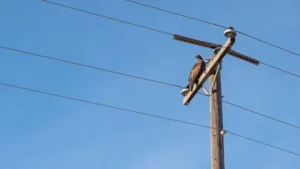






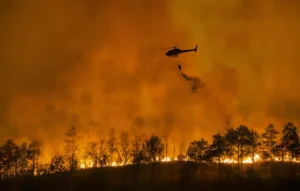

I have a Kodiak two door stove old no glasses on baffles do you think I can burn coll.
Ed
December 4, 2023 4:24 pm